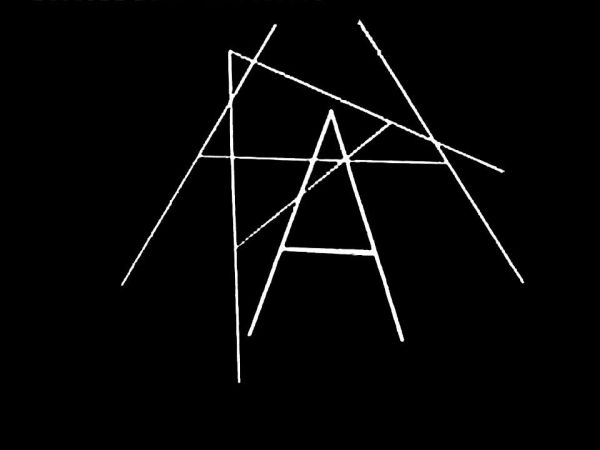Roda Lume (1969)
N/C
2m 50s
Realização: · Ernesto de Melo e Castro
[An impulse towards the use of new technological means resulting in the production of my firs videopoem — Roda Lume — in black and white, consisting of animated geometric shapes and letters that were previously hand drawn. The animation was made by direct editing on the camera, registering image after image with a time-based corrector. A storyboard was first made with image sequence and respective time. Sound was added afterwards as an improvised phonetic reading of the visual images. I produced the sound myself.
This videopoem was shown on a literary magazine on Portuguese television in the beginning of 1969 and it produced a scandal amongst the spectators. It was then destroyed by the official television station as it was regarded without any interest. Now I am told that it is probably the first videopoem made as such, and that it is different from the techniques and aesthetics of videoart. I kept the storyboard drawings and was able to make a new version of it in 1986. The sound track is different as I didn’t keep a recording of the original improvisation and had to make a new one from memory. The duration of this version is 2’58. In 1985, as a result of an opportunity given to me by the Portuguese Institute for Distance Learning (IPED) and later by the Open University of Lisbon, I was able to use television studios to explore the creative possibilities offered by the new electronic and digital equipment recently installed. As a result I devised the project Signagens (Signings) which I developed up to 1989.
This project intended first of all to investigate video possibilities as a new medium for reading poetry. It was meant to be used in Portuguese literature classes. Very soon I realized that intersemiotic translation of print-based visual and experimental poems was obvious, as video seemed to me a perfect medium for animation of letters and words. Then I produced a set of videopoems based almost exclusively on pre-existing poems from the ’60s. I used mostly poems of my own from the time.
[Melo e Castro, Videopoetry]
Mais informações: Website externo
- [Trailer]

[Melo e Castro (S/D), Videopoetry]
http://www.ociocriativo.com.br/guests/meloecastro/video.htm